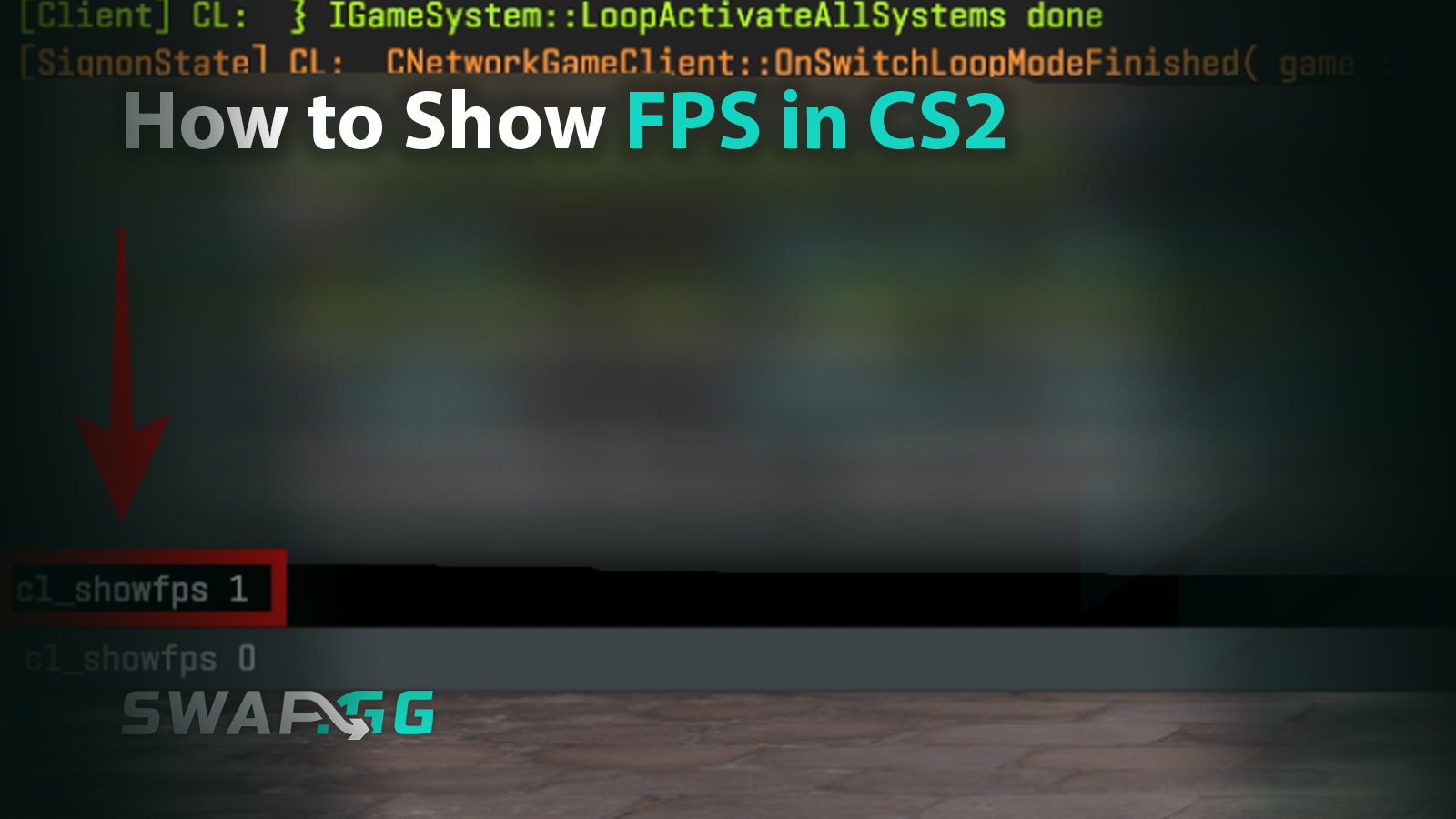How to Show FPS in CS2: A Practical Guide for Competitive Players

Geplaatst op in Common QuestionsCS2

If you’re serious about dominating in Counter-Strike 2, knowing your FPS (frames per second) isn’t just a numbers game; it’s a lifeline. Whether you’re dodging an AWP shot or clutching a 1v3, every frame counts. In this guide, we’ll walk you through four reliable methods to display FPS in CS2, explain why tracking it matters, and help you optimize your setup for peak performance. Let’s jump in.
Method 1: Steam Overlay
Steam’s built-in FPS counter is the simplest way to track performance without leaving the game. Here’s how to enable it:
- Open Steam Settings: Right-click the Steam client, go to Settings > Interface.
- Enable the Overlay: Check “Enable the Steam Overlay while playing a game.”
- Customize the Display: During gameplay, press Shift + Tab to open the overlay, then navigate to Performance > FPS Counter. You can adjust the position and color here.
Limitation: The overlay only shows real-time FPS. If you want deeper insights (like network stats), keep reading.
Method 2: Console Commands
CS2’s console is a goldmine for players who want granular control. Here’s how to use it:
- Enable the Console: Go to Options > Game Settings and toggle on “Enable Developer Console.”
- Show FPS: Press the tilde key (~) to open the console and type:
- cl_showfps 1 – Displays a basic FPS counter.
- Save Your Settings: Add these commands to your autoexec.cfg file so they persist after restarts.
Method 3: Launch Options
If you hate manually enabling FPS displays, launch options are your friend. Here’s how:
- Open Steam Library: Right-click Counter-Strike 2 > Properties > Set Launch Options.
- Add Commands: Input:
- +cl_showfps 1 – Automatically enables the FPS counter.
- Apply and Play: These settings load every time you launch the game.
Method 4: Third-Party Tools
For players who want frame times, GPU usage, and temperatures alongside FPS, third-party software is the way to go:
AMD Software: Adrenalin Edition
For AMD users, the Adrenalin Edition software provides detailed performance metrics such as FPS, GPU utilization, clock speeds, and temperatures. To access these features, open the Radeon Software, go to Preferences to enable the In-Game Overlay, and then activate the Performance Metrics Overlay from the Performance tab. This tool lets you monitor your system's performance seamlessly without needing any additional software.
NVIDIA GeForce Experience
NVIDIA users can take advantage of GeForce Experience’s in-game overlay to track FPS, GPU temperature, CPU utilization, and more while playing Counter-Strike 2. Simply open GeForce Experience, enable the In-Game Overlay in settings, press Alt + Z to open the overlay, and Alt + R to toggle performance metrics onscreen. This feature is particularly helpful for identifying performance bottlenecks and optimizing gameplay settings.
MSI Afterburner with RivaTuner Statistics Server (RTSS)
For a highly customizable solution compatible with both NVIDIA and AMD graphics cards, MSI Afterburner, paired with RivaTuner Statistics Server, is a go-to choice. This powerhouse combination lets users set up a tailored on-screen display showing FPS, GPU usage, CPU usage, temperatures, clock speeds, and more. Once installed, you can cherry-pick the metrics you want to monitor, making it perfect for both detailed benchmarking and everyday performance tracking.
The Importance of Stable FPS in CS2
Stable FPS in Counter-Strike 2 is crucial for competitive play, as it ensures smooth movement and precise aiming, both of which are essential during fast-paced matches. Sudden frame drops during intense moments—like smoke grenades or explosions—can disrupt gameplay, reduce visibility, and make it harder to react effectively. These performance issues often arise from hardware limitations or unoptimized settings but can be mitigated by tweaking in-game graphics options.
Lowering visual complexity by adjusting settings such as global shadow quality, shader detail, and particle effects can significantly improve FPS stability without sacrificing key visual cues. For instance, setting shadows to low or medium while keeping dynamic shadows enabled allows players to maintain visibility while improving performance. Disabling unnecessary effects like ambient occlusion and opting for performance-focused settings can further stabilize frame rates.
Using in-game commands like cl_showfps 1 or third-party tools to monitor FPS can help pinpoint bottlenecks, allowing players to optimize their systems more effectively. Additional steps, such as updating drivers and fine-tuning launch options, also contribute to smoother and more responsive gameplay. Ultimately, prioritizing stable FPS over chasing high numbers ensures better muscle memory, quicker reactions, and more consistent results in competitive play.
Final Thoughts
Whether you prefer Steam’s simplicity, the console’s precision, launch options’ automation, or third-party depth, there’s no one-size-fits-all approach. Experiment with these methods to find what works for your rig and play style. And remember: A smooth game is a winning game.
Geplaatst op in Common QuestionsCS2
![[THUMBNAIL] Is 7.1 Surround Good for CS2? The Reality Behind Virtual Audio](https://swap.gg/cdn-cgi/image/f=auto/https://blog.swap.gg/content/images/2025/12/Is-7.1-Surround-Good-for-CS2_.png)
![[THUMBNAIL] Is CS2 CPU or GPU-intensive? What Hardware Actually Matters](https://swap.gg/cdn-cgi/image/f=auto/https://blog.swap.gg/content/images/2025/12/Is-CS2-CPU-or-GPU-intensive_.png)
![[THUMBNAIL] What Is the Cheapest Knife in CS2? Your Complete Budget Guide](https://swap.gg/cdn-cgi/image/f=auto/https://blog.swap.gg/content/images/2025/12/cheapest-knives.png)